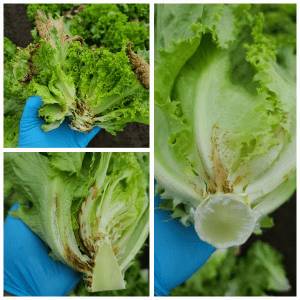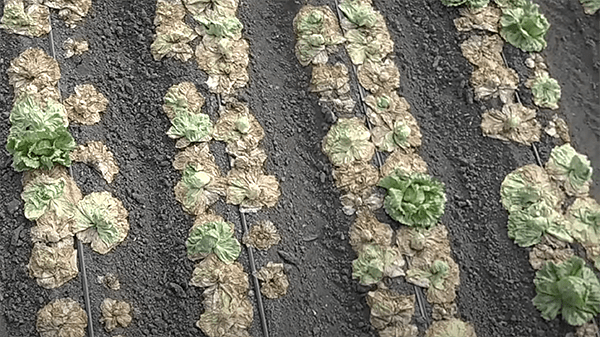An online panel convened on April 19 by the International Fresh Produce Association (IFPA) BB #:378962 to discuss the impatiens necrotic spot virus (INSV) in lettuce revealed some optimism about the level of the disease in 2023.
Early warning signs of INSV include yellowing, browning, stunting, and deformed leaves, said Steve Kolke, director of TriCal Diagnostics, a research lab specializing in plant diseases. “Growers should be aware of anything that looks abnormal,” including “any break in color or size in the field.”
INSV does not harm humans or animals, but it does render the crop unsalable. It has been widespread in the Salinas Valley, but so far has only had a minimal impact in the Yuma, AZ, area, the other prime supplier of lettuce in the U.S., Kolke observed.
Mary Zischke, leader of a task force convened by the Grower-Shipper Association BB #:162651 to address INSV, indicated some optimism for this year in that trappings of thrips—the disease’s chief vector— throughout the Salinas Valley have been very low so far this season because of extremely wet and cold conditions.
“We’re going to start out with a lower baseline” of thrips infestations this year, she said, but added, “None of us have a crystal ball. It’s a very long growing season.”

The panelists also expressed optimism in the long run for management of the disease through continuing research. One promising area is the development of INSV-resistant or -tolerant lettuce varieties.
Although a couple of these are showing promise, another panelist, Jennifer Clarke, executive director of California Leafy Greens Research Board, stressed that developing such a variety is a long-term project, spanning 8 to 10 years. Two factors are at work here.
“It’s one thing to get resistance,” she noted, “but it’s another thing to get the plant the way we want the plant to look. It’s very slow.” The next challenge is, once this variety is developed, to produce enough seed to cover the entire Salinas Valley.
Control of INSV is for the most part ineffective. One response, Clarke pointed out, is called roguing: going through the field and removing infected plants. “It’s labor-intensive,” she added, and “not a very good control.”
Sometimes growers will harvest early to minimize losses, Kolke added. “Plowing under that old crop would probably be a good idea, but research has not shown it would make a significant difference.”
Kolke also pointed out that there is spillover of the disease into other crops, including spinach, celery, peas, radicchio, and endive, but these crops typically do not have a high amount of infection, and damage is 1 percent or less.
Other diseases and viruses cause similar symptoms, added Kolke, highlighting the importance of testing by a commercial lab. Results generally come within 3 to 5 days, he added.
The panelists agreed that one advantage the lettuce industry enjoys in combatting INSV and other diseases is a high degree of communication and cooperation, even among growers who are competing with one another.
“For an industry to maintain its position, it takes teamwork,” said Kolke, adding that he was “impressed with the collaboration between growers and researchers.”
Salinas Valley agriculture, he added, is a “model of collaboration.”



